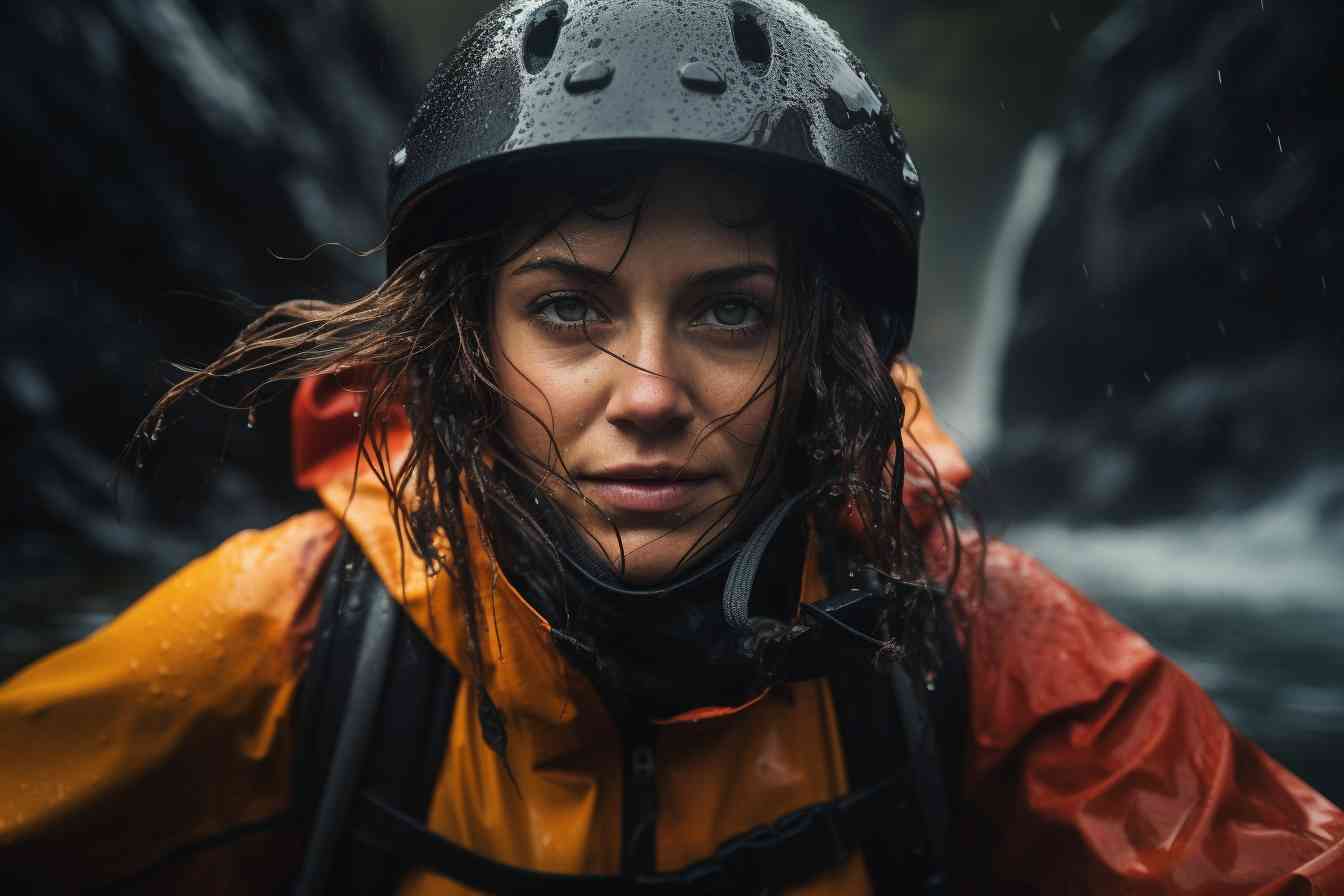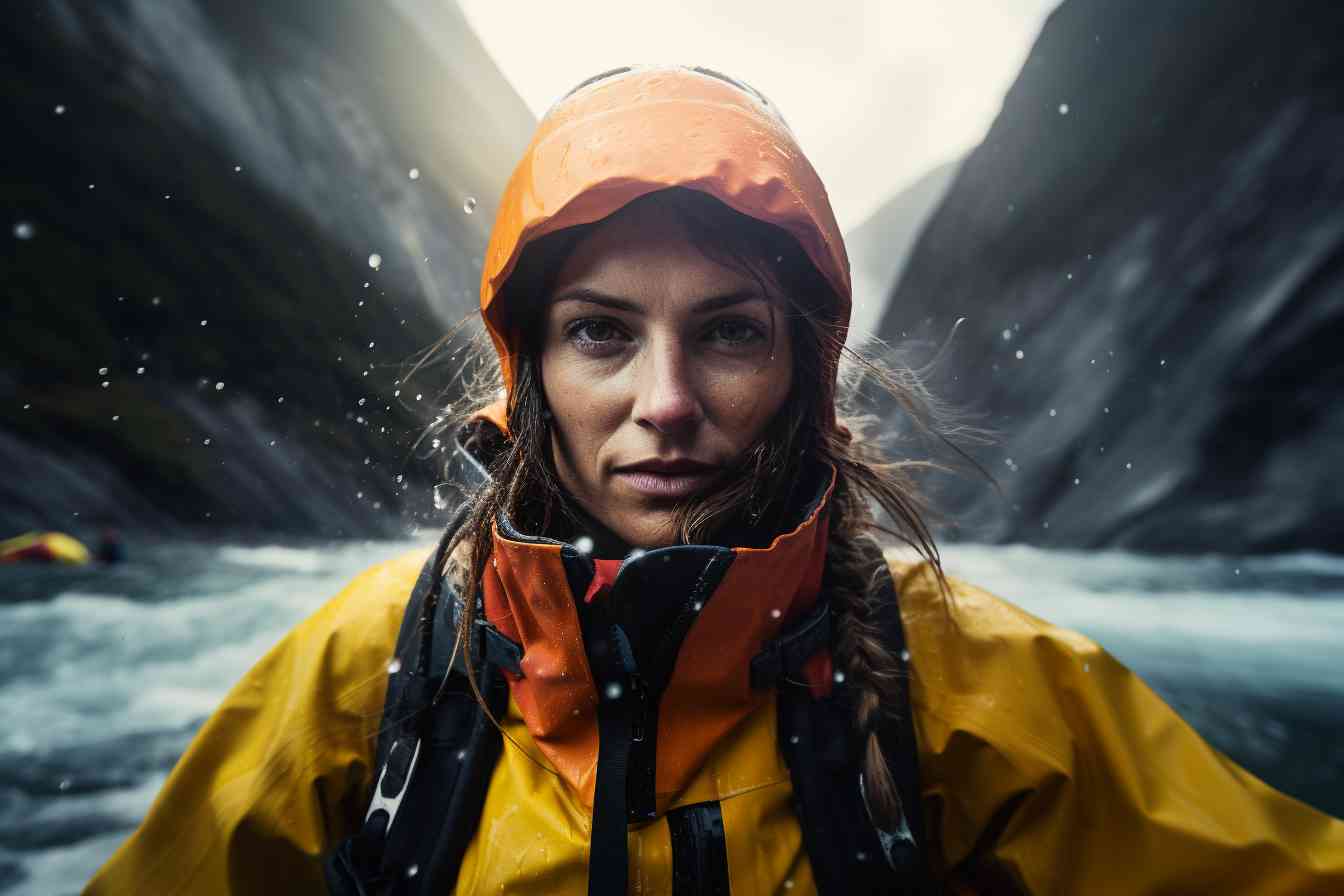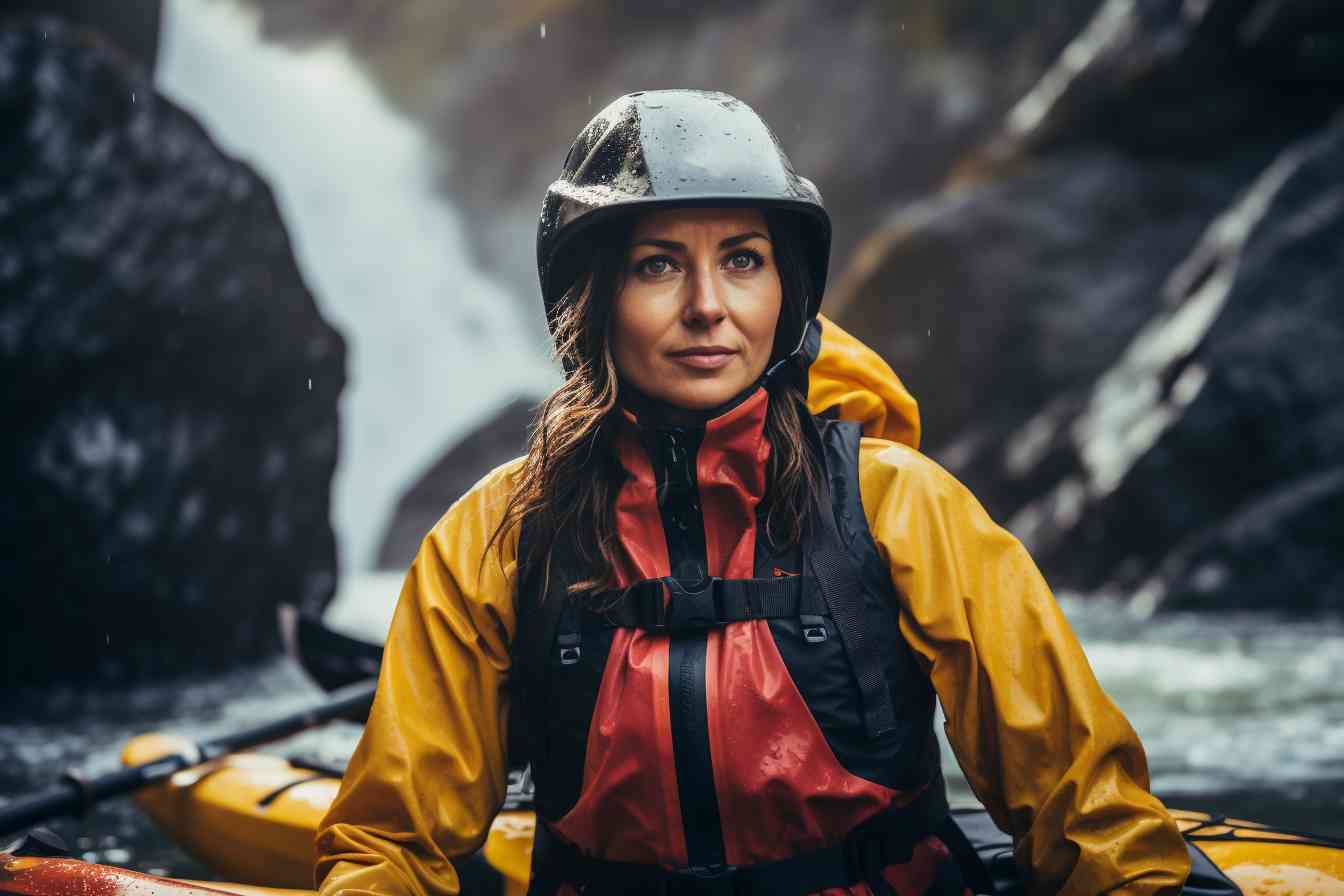Intro: How To Choose A Kayak Dry Suit

Alright, friends! It seems like we’re diving into the exciting world of kayaking, which I gotta tell ya, it’s a blast! But, let’s be honest here, part of the fun is knowing how to properly gear up. One of the essential items, especially if we’re talking about kayaking in colder climes or in late seasons, is a good old kayak dry suit. Now, let’s talk about how to choose the best one for you.
First things first — material is crucial! You want something durable, waterproof (duh!), yet breathable. Gore-Tex is often considered the gold standard, but other materials such as eVent or proprietary fabrics can also do the trick. They key thing to remember is you want it to keep water out but let sweat evaporate.
Sizing and fit shouldn’t be neglected, either. You’d want a suit roomy enough to allow for comfortable movement and layering, but not so large that it allows for water seepage. A good dry suit should fit like a second skin, hugging your curves and angles without being restrictive.
Oh—don’t forget about the all-important seals! They’re located around your wrists and neck, and their job is to prevent water from sneaking in. Check if they’re made of high-quality latex.
Last, but certainly not least, consider its features and design. Are the zippers in accessible places? Does it have a relief zipper (you’ll thank me later)? Are there reinforcements in high-wear areas like the knees and seat? All these features can make or break your kayaking trip.
Altogether, choosing a kayak dry suit is a tad more complex than picking out a winter coat, but the right choice will make your kayaking journey that much more enjoyable. So take your time, do some research, and get yourself a suit that will keep you dry, warm, and ready to paddle through any weather!
Is A Dry Suit Worth It For Kayaking?

So, here’s the burning question—should you hitch your wagon to a dry suit for kayaking? Well, let’s chew the fat on that and see if we can suss it all out.
First off, it’s no secret that a dry suit can be a real lifesaver in the kayaking world. You know, when Mother Nature decides to throw a cold, wet curveball your way, a good dry suit is worth its weight in gold. The big idea is that these suits keep you—you guessed it—dry, even while you’re gallivanting about in chilly or watery conditions. And that, my friend, is a game-changer when you’re out in a kayak.
Sure, they may cost a pretty penny, but these suits often prove their worth when the chips are down. From saving you from hypothermia to keeping your paddle-strokes smooth and unconstrained, a dry suit is like your personal security guard against the elements.
But remember, not all dry suits are carved from the same cloth. Different models can vary like chalk and cheese when it comes to water resistance, breathability and durability. So, choosing the one that fits your bill takes a wee bit of time and patience.
In a nutshell, a dry suit is a hefty investment for kayaking. But if you ace choosing the one that’s right for you, it’s a purchase you won’t regret. Because at the end of the day, safety is priceless. So, is a dry suit worth it for kayaking? I’d say, without a shadow of a doubt, absolutely!
What To Look For When Buying A Drysuit?

Alrighty, let’s dive right into this! Now, when it comes to picking out a drysuit for kayaking, you’ll want something that’s durably crafted, form fitting, and, most preferably, water-resistant. It’s gotta be rugged enough to withstand the rough and tumble of the river, yet snug enough that it won’t impede your paddling. You catch my drift?
Material choice is another huge influencer in your decision. Neoprene, Gore-Tex, and nylon are the usual contenders, but each comes with its own bag of pros and cons. Neoprene, for example, is swell for insulation but tends to be bulkier than its siblings. Gore-Tex, on the other hand, is lightweight and breathable but can break the bank with its price tag. So, definitely mull over this aspect, would ya?
Size matters too, folks. Obviously, you want the suit to accommodate your body’s width and height. However, you should also consider your paddling style and the kind of activities you’ll be indulging in. If you’re into whitewater kayaking, for example, you might prefer a looser fitting suit for better maneuverability.
Hey, just a sec! Have you considered the difference between a dry suit and a wet suit? The former keeps you dry – duh – and the latter keeps you warm by trapping a layer of water against your skin. So definitely think about the temperatures you’ll be paddling in, okay? That’s some food for thought, isn’t it?
Lastly, remember to check the suit’s key features for utility. Stuff like reinforced knee and elbow patches for durability, latex gaskets around the neck and wrists for water-tightness, and built-in socks for keeping your feet dry are all worth a gander. And hey, don’t forget to keep a little wiggle room in your budget for any extra accessories needed, like a hood, gloves, or booties!
What Are The Best Drysuits For Kayaking?

You know, I have often thought about the importance of a good dry suit when it comes to kayaking. It’s really a crucial piece of gear, isn’t it? When you’re cruising along those chilly waterways, the right drysuit can mean the difference between a comfortable ride and a miserable, wet mess. Let’s talk about the best drysuits for kayaking and how to choose one that suits your needs.
First and foremost, I deeply respect the craftsmanship behind the Kokatat Gore-Tex Radius Drysuit. Oh boy, it’s a beauty with its waterproof and breathable Gore-Tex fabric. And, let’s not forget those strategically placed Cordura reinforcements; they’re designed to resist rips and tears. The versatility is profound, with the ability to convert it into a dry top when needed. Quite ingenious, if you ask me!
Now, if you’re looking for something that oozes comfort, the NRS Crux Suit’s got your back. It’s designed with a four-layer Eclipse fabric, so it snugly fits like a second skin, keeping you dry and toasty. I admire their attention to detail – integrated socks, adjustable overskirt, and even relief zippers for when nature calls!
The Stohlquist Amp is another standout in the world of kayak drysuits. The Amp makes its mark with an excellent balance of durability and flexibility. Its design incorporates a breathble material that reduces internal condensation, ensuring you stay dry inside and out.
When selecting the best drysuit for kayaking, pay close attention to the fit and material used. It should be able to withstand the rigors of your adventures and should fit just right. A poor fitting drysuit is just about as useful… well, a waterproof teabag! And, remember the golden rule: You get what you pay for! Trust me, investing in a quality drysuit is worth every penny!
Best Drysuit For Kayaking
Oh boy, selecting the can be a tad overwhelming – but don’t fret. Here are some crucial factors to consider to ensure you stay dry and comfy paddling, no matter the weather.
-
Material: Commonly, drysuits are made from either nylon or Gore-Tex. Nylon is cheaper but less breathable, which can lead to condensation inside the suit. Gore-Tex, on the other hand, is pricier but offers better breathability. Think about these pros and cons before forking out – you usually get what you pay for.
-
Fit: The fit of the drysuit is paramount. It shouldn’t be too tight or too baggy. You gotta be able to move freely, so it’s best to try it on with your usual kayaking clothes underneath.
-
Seals: Look at the neck and wrist seals. Are they latex or neoprene? Latex seals are watertight but less comfortable. Neoprene seals are comfier but not 100% waterproof. Again, the choice depends on your personal preference and comfort.
-
Zipper: Most drysuits have either a front or rear entry zipper. A front entry is convenient, but it can interfere with your PFD (Personal Flotation Device). On the other hand, a rear entry is less obtrusive, but you will need assistance to don and doff your suit.
-
Socks: Some drysuits come with attached socks, which can keep your feet dry. If the suit you’re considering doesn’t have this feature, you’ll need to think about how you’ll keep your feet dry.
-
Repairability: Think about how you’ll repair the suit if it gets damaged. Some materials and designs are more easily repaired than others, which can be a crucial factor if you plan to paddle in remote areas.
-
Price: Finally, you gotta consider the price. As I mentioned earlier, the cheaper suits are often less breathable and durable. However, if you’re only going kayaking occasionally or in mild conditions, a cheaper suit could do the trick.
Remember, when it comes to buying a drysuit, it’s not just about picking the one with the highest reviews – you have to consider what’ll suit your specific needs on the water. Well, that’s all the advice I’ve got. Take care out there and happy paddling!
At What Temperature Do I Need A Drysuit For Kayaking?
Alright, let’s dive head-first into this exciting topic! So, you’re planning a kayaking trip but you’re unsure whether you need a dry suit? I totally understand your predicament. Well, the temperature plays a major role in this decision. Typically, we recommend a drysuit for temperatures below 60°F – that’s the benchmark in our industry. You see, hypothermia starts setting in around 50°F and the onset is faster if your clothing is wet. So, it’s better to be safe than sorry.
Now don’t think of it as a hard and fast rule, it’s more of a guideline. You gotta think about your personal comfort too! If you’re the kind who gets cold easily or if you’re gonna be paddling in colder waters… Well, it’s probably a good idea to invest in a drysuit. Remember, not all drysuits are created equal, so you need to consider the insulation and the material of the suit too when deciding. Feeling comfy and warm is the key to a fun kayaking trip!
Ohh, I almost forgot. Another factor that plays a significant role is the duration of your trip. If you’re venturing out for a lengthy trip or if you plan to kayak in colder weather, a drysuit is a smart choice.
A word of caution… misuse of a drysuit can lead to overheating or even heatstroke. So balance is key. In sunny conditions, even if it’s chilly, you might want to stick to a wetsuit or even go with a semi-dry suit instead.
In conclusion, both water and air temperature, your personal comfort, and trip duration play a major role in deciding if you need a drysuit for kayaking. If you’re wondering what’s best for you, just ask yourself, “Would I be comfortable in this temperature while soaking wet?” If the answer is no, go for a drysuit.
Remember, staying safe and enjoying your trip is the ultimate goal! So suit up, friends, and happy kayaking!
Final Verdict
Alright, let me express my final thoughts on choosing a kayak dry suit. Forgive me in advance if I get all drawn in with this topic; it’s so close to my heart!
First off, when looking to buy a kayak dry suit, you’re essentially looking for a second skin – one that’ll keep you dry as a bone even when you’re splashed all over. Isn’t that an exciting idea? I sure think it’s cool as a cucumber! So, you’ve gotta pick materials that scream “waterproof” and “durable”. Look to the gods of toughness – Gore-Tex, nylon, and breathable laminates – just to name a few!
Don’t throw caution to the wind when considering the size…your dry suit should fit like a glove, but not be claustraphobically tight. You need enough room to paddle and move freely, right? That’s a given. And we can’t forget about accessibility. The entry and relief zippers are no joke! They make getting into and out of the suit a breeze.
Last but not least, your dry suit should have gaskets to properly seal off the entry points for water at your wrists and neck. Now, I hope my roundabout chat didn’t confuse you -they’re basically the cherry on the top, ensuring you won’t get wet. The icing on the cake, if you will.
Choosing a kayak dry suit might seem like a breeze, but it’s actually a complex process, akin to solving a puzzle or cracking a code. With the right knowledge, though, you’ll pull through just fine. Happy paddling, friends! Remember, better safe than soggy!
Frequently Asked Questions
Q1: What is a Kayak Dry Suit?
Great question! A kayak dry suit is a waterproof outfit designed to protect a kayaker from the cold water and weather elements when kayaking. It’s constructed to keep the kayaker as dry as possible, even if they take a tumble into water.
Q2: Why do I need a Dry Suit for Kayaking?
Well, safety and comfort are paramount in any sport, and kayaking is no different. A dry suit can protect you from hypothermia when paddling in colder water. It eliminates the risk of getting wet, keeping you warm and safe while you enjoy your kayaking adventure.
Q3: How do I Choose the Perfect Kayak Dry Suit?
Choosing a dry suit certainly depends on your individual needs and the environment you’ll be kayaking in. Factors to consider include the suit’s material, breathability, and fit. Also look for durability, waterproofing, and insulation features. It’s all about what suits you!
Q4: What Materials are Kayak Dry Suits Made From?
Ah, the nuts and bolts of it! Most dry suits for kayaking are made from Gore-Tex, nylon or neoprene. Each material comes with different levels of comfort, breathability, and durability, so it really depends on what you’re looking for in a dry suit.
Q5: Is the Fit of a Kayak Dry Suit Important?
Oh, absolutely! The fit is crucial. You want a suit that will allow maximum mobility without compromising on comfort. It should be spacious enough to accommodate your clothing layers but should not be too baggy as it might hinder movement.
Q6: Do All Dry Suits for Kayaking Offer Breathability?
Not all, but most top-notch dry suits do. Breathability is a key feature in a dry suit as it allows perspiration to escape, preventing you from feeling damp or stuffy.
Q7: How to Maintain and Care for My Kayak Dry Suit?
Good question! Well, rinsing it with fresh water after each use is a good start, this removes any dirt or salt. Also, remember to check the seals regularly for any damage and mend it as soon as possible. Store it away from direct sunlight in a cool, dry place.
Q8: Where Can I Buy a Kayak Dry Suit?
You can find a kayak dry suit in various outdoor sporting goods stores or online platforms like Amazon, eBay, or specific kayaking gear websites. It’s important to research and compare prices and reviews to get the best deal.
Q9: Can I Wear My Regular Clothes Under a Dry Suit?
Yes, you can! But remember, the key is to dress for the water temperature, not the air temperature. Layer your clothing properly and choose materials that retain heat when wet, like wool or synthetic fibers.
Q10: Is a Dry Suit Enough to Protect Me from Hypothermia?
Mind you, while a dry suit can significantly reduce the risk of hypothermia, it’s not a guarantee. You should always be prepared, know the signs of hypothermia, and carry a first aid kit when kayaking, especially in cold water climates. Stay safe, folks!

